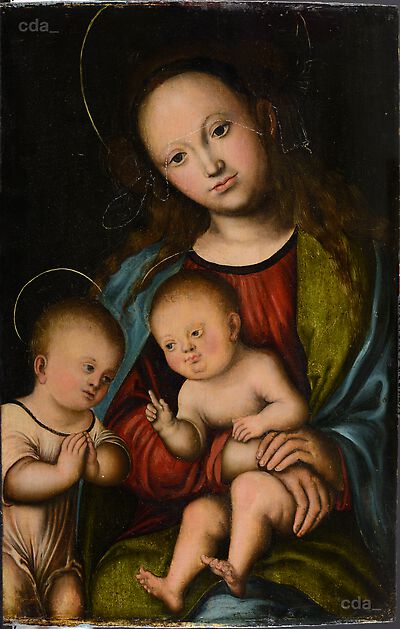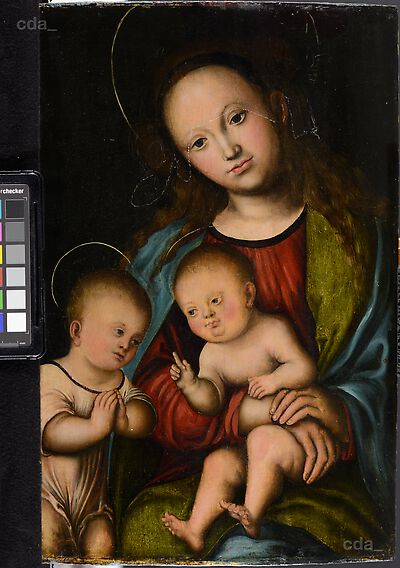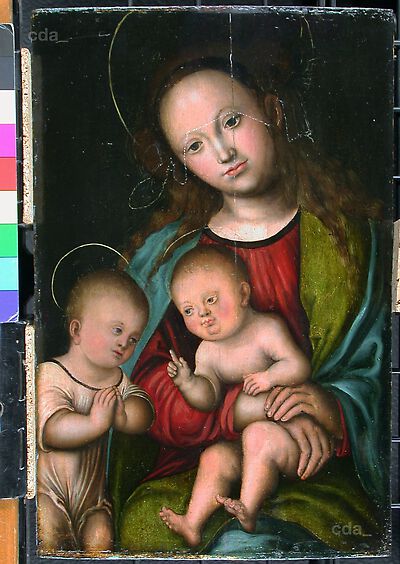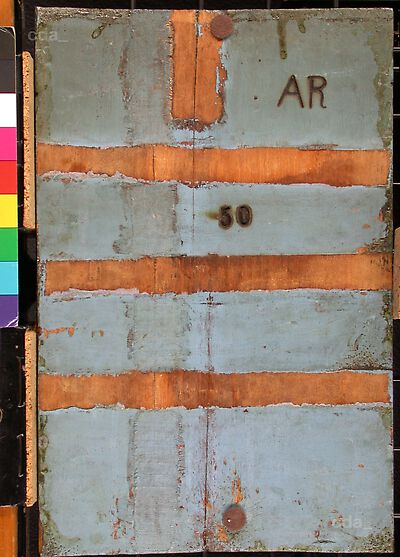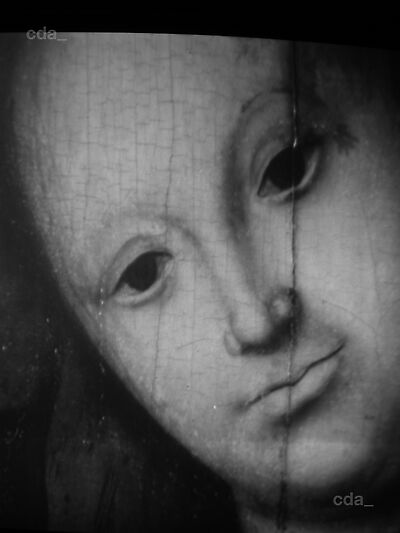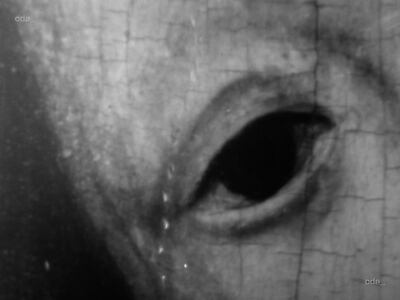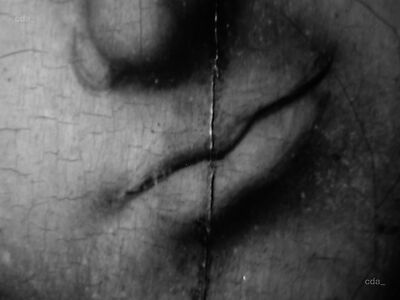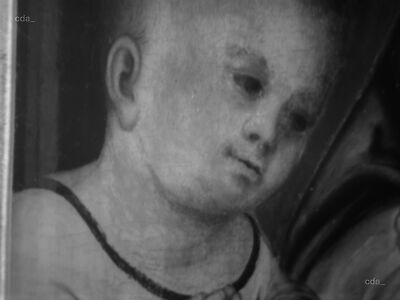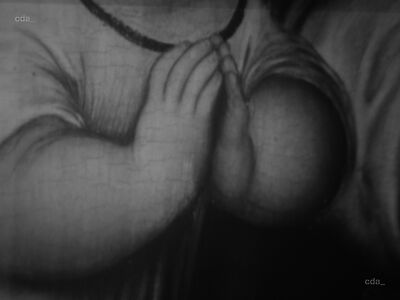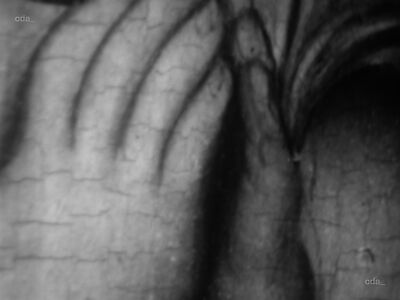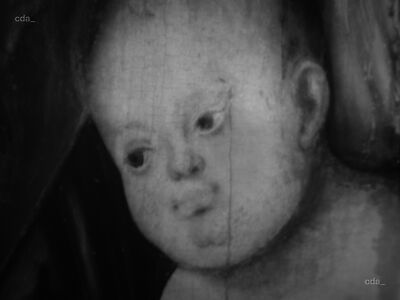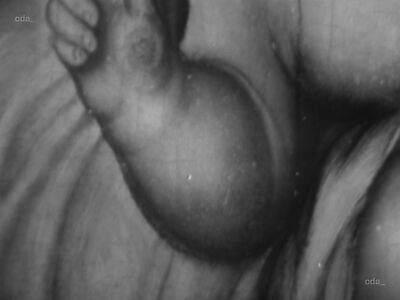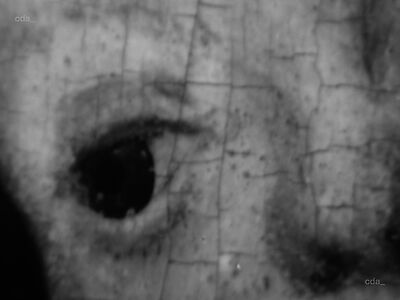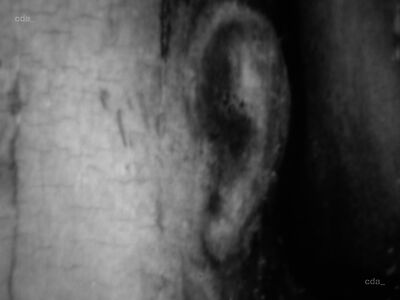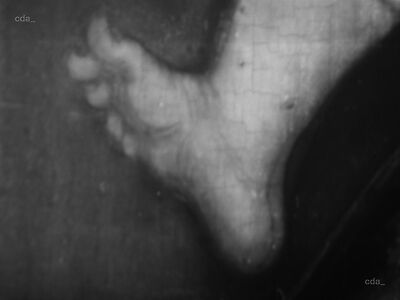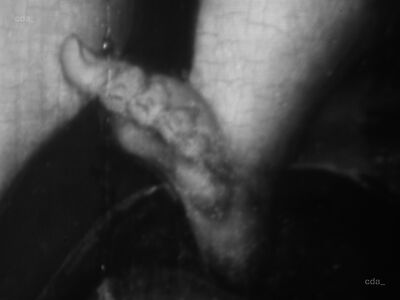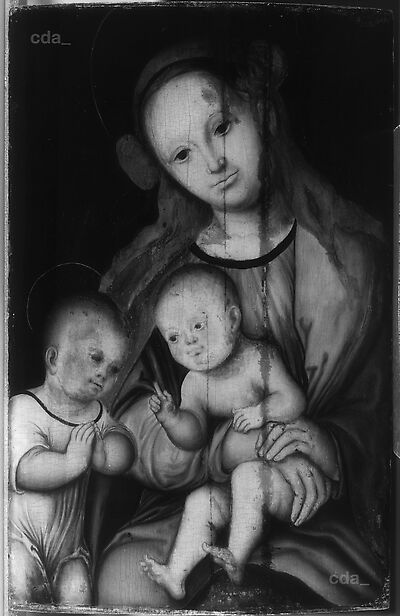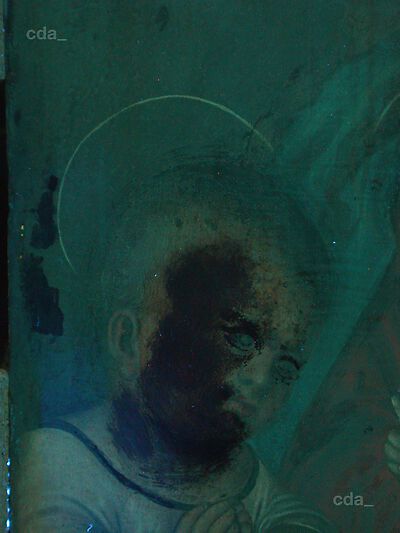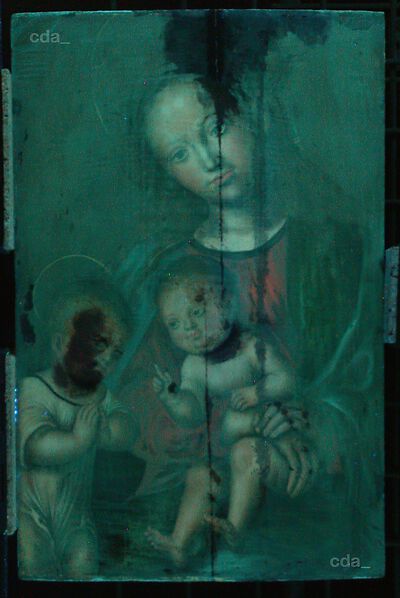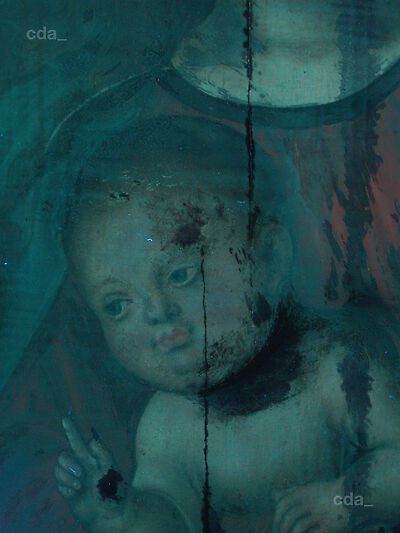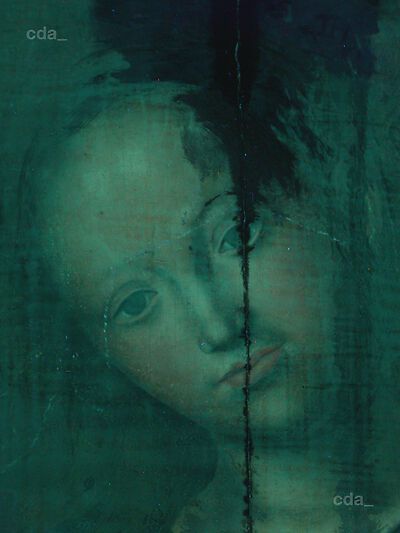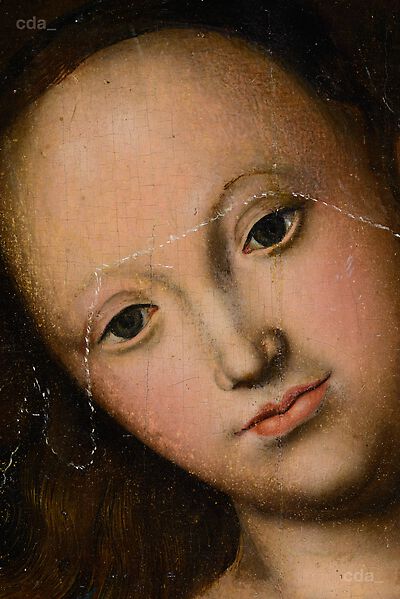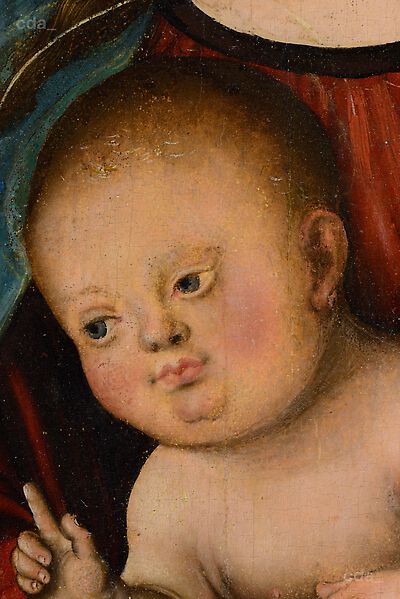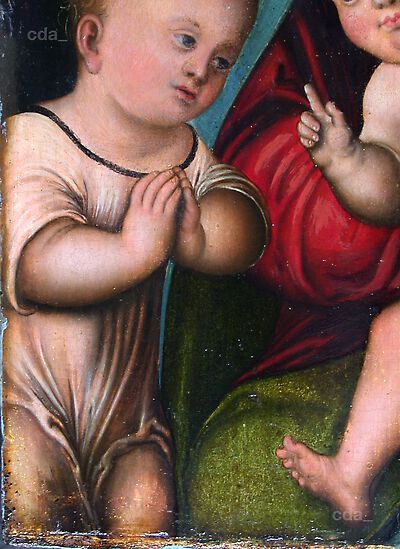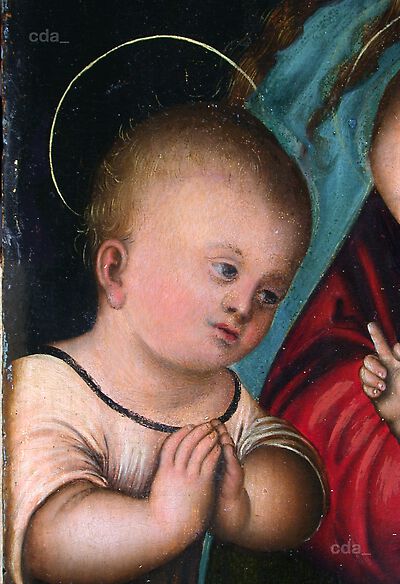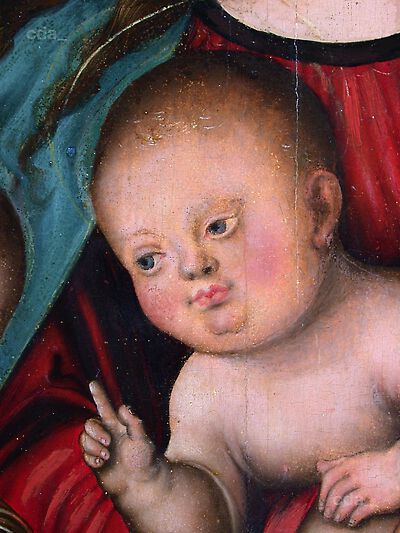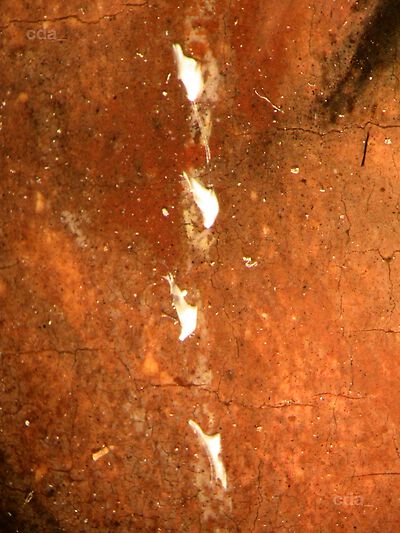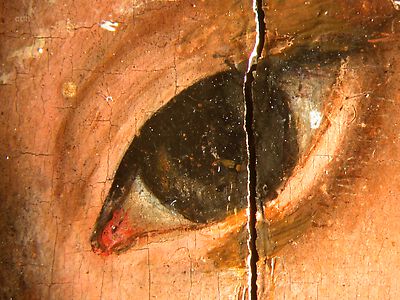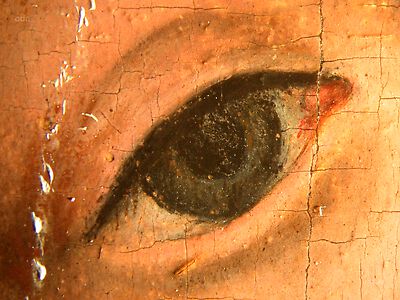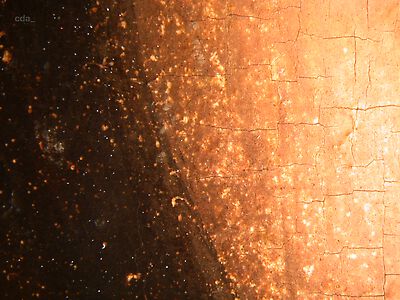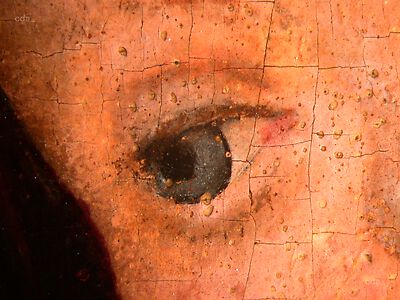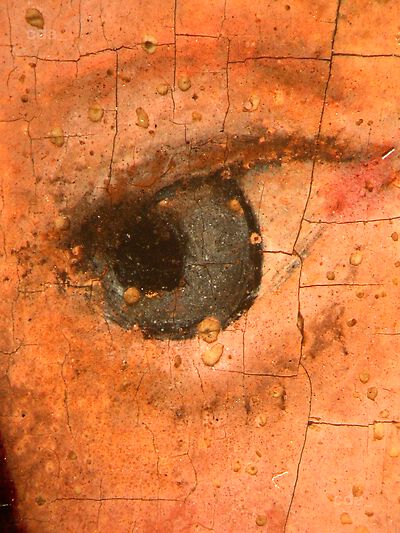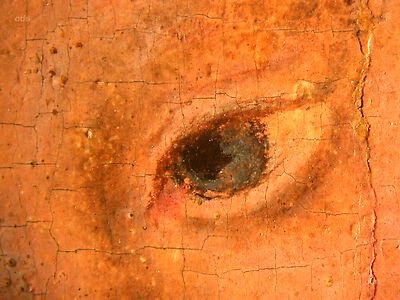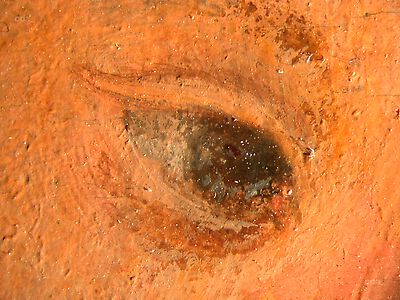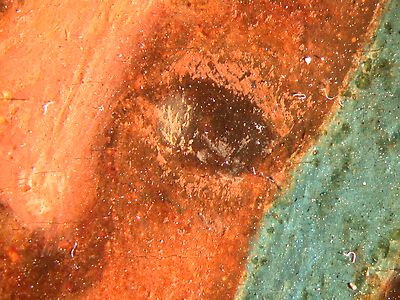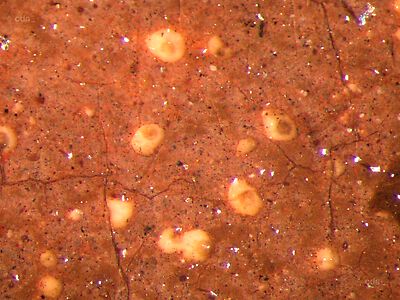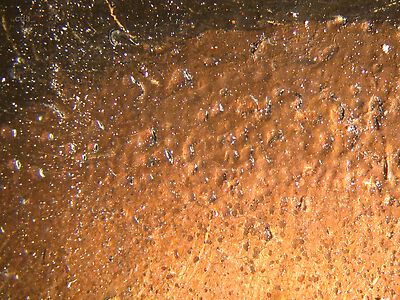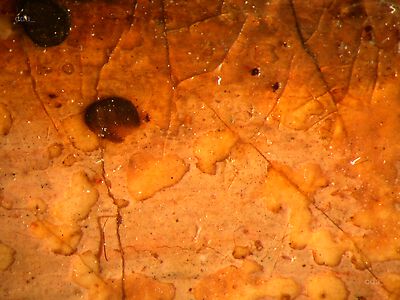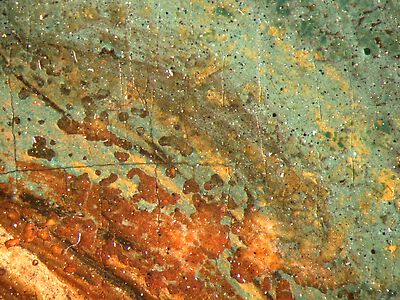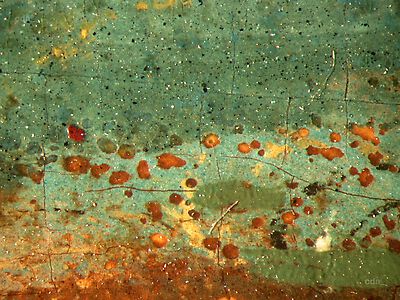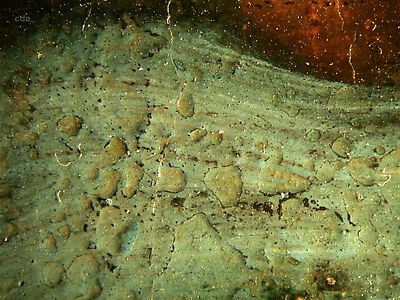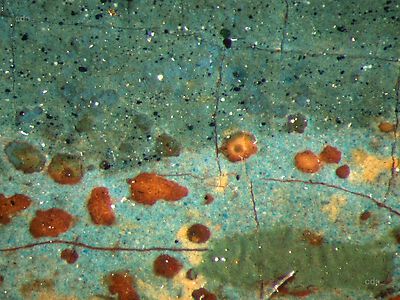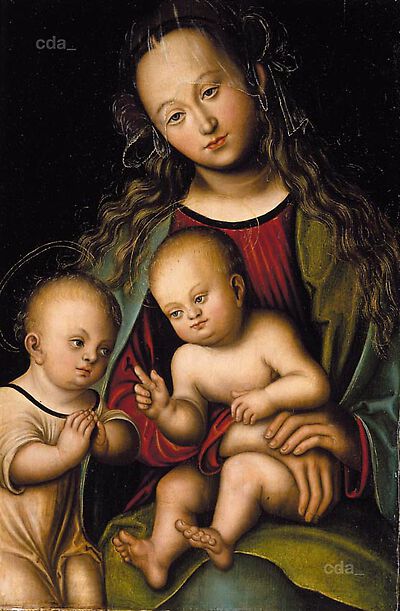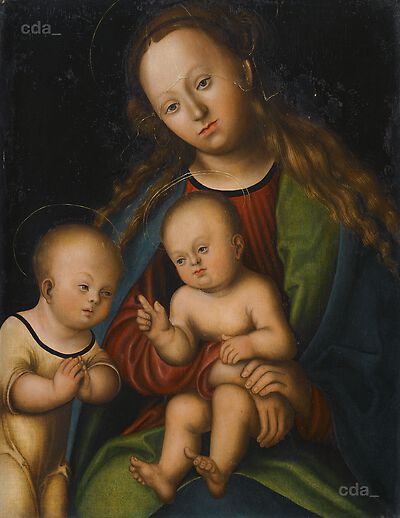Support
- the panel is from a single plank, softwood, probably lime
- tangential cut
- the reverse of the panel has been thinned and a coating was applied. It is therefore not possible to verify the original dimensions of the panel; however tt was probably about the same size it is today as the edges of the ground and the incised lines have in part survived.
- the dimensions correspond with one of the standard formats used in the Cranach workshop ('B', H: 33.5 - 39 cm, W: 23.5 x 30 cm)
Ground and Imprimatura
- white ground, probably chalk
- the ground extends to the edge of the panel at the left and right (possiibly due to a later trimming of the panel), at the top and the bottom the edge of the ground has in part survived as well as incised lines parallel to the edge of the panel. These lines may have been incised when a temporary frame was used during ground application or they they may have served to mark the edge of the composition; numerous panels from the Cranach workshop exhibit similar incised lines in the ground.
- a white to light red pigmented layer, probably an imprimatura covers the entire surface between the ground and paint layers. A small amount of red lead is unevenly dispersed throughout; white and pink toned imprimatura are frequently observed on paintings by Lucas Cranach the Elder.
Underdrawing
- the infrared reflectogram shows some underdrawing; probably black ink applied with a brush
Paint Layers and Gilding
Flesh paint
The modulation of the faces and bodies was applied over an opaque admixture of lead white and fine pigment particles of vermilion. The depth of the shadows was achieved with the addition of black (carbon black?) and brown pigments. Subsequently volume and highlights were accentuated with a light paint containing lead white. Shadows were subtly shaded employing a greyish-brown paint and vermilion was used to emphasize the red cheeks. The contours and modelling of details (eyes, mouth, nose) are formulaic in nature. Christ’s right lower arm was made slightly broader at a later stage of the painting process, and contours were added to the Virgin’s red robe. Single hair strands were applied in yellow and black paint over a brown body colour.
The x-radiogram shows the multilayered and careful modeling of the flesh paint. The varying quantities of lead white create a relief image, which illustrates the subtle application employed to achieve volume and highlights. Under the appropriate magnification it is evident that the paint was stippled rather than being applied with strokes. This method for modulating flesh paint is characteristic for numerous works from the Wittenberg workshop. Examples from the years 1510-1520 (FR 31, 35, 38A etc.) as well as later have survived.
Robes, haloes and background
The blue robe and its green lining were worked up over a grey underpaint. Volume and tone values were established in this grisaille-like design. The paint was then applied with a stippling method. Azurite was probably the pigment used in the blue robe. The green lining consists of numerous both opaque and glazed layers. The layer structure of the red paint could not be determined under the stereomicroscope. A grey underpaint may also have been employed here. Modulation was achieved with vermilion red and red lake glazes. Grey undermodelling is one of the methods frequently employed in Lucas Cranach’s Wittenberg workshop. The earliest known example of a grey underpaint used for a blue robe can be found on the ‚The Virgin and Child’ in the Thyssen-Bornemisza collection (FR 30, about 1512/14). Most of the recorded grisaille-like undermodelling for blue material dates from the second half of the 20s. According to the latest findings in the following decades this method became increasing less practiced.
The haloes were applied with an admixture of yellow and red paint (vermilion?). The transparent protrusions in the yellow paint are characteristic for lead-tin-yellow and are frequently observed in admixture with red pigments on works by Lucas Cranach the Elder. The black background contains finely ground black pigment, which is probably lamp black, and was generally used for backgrounds in the Cranach workshop.
[unpublished examination report G. Heydenreich, 2005]
